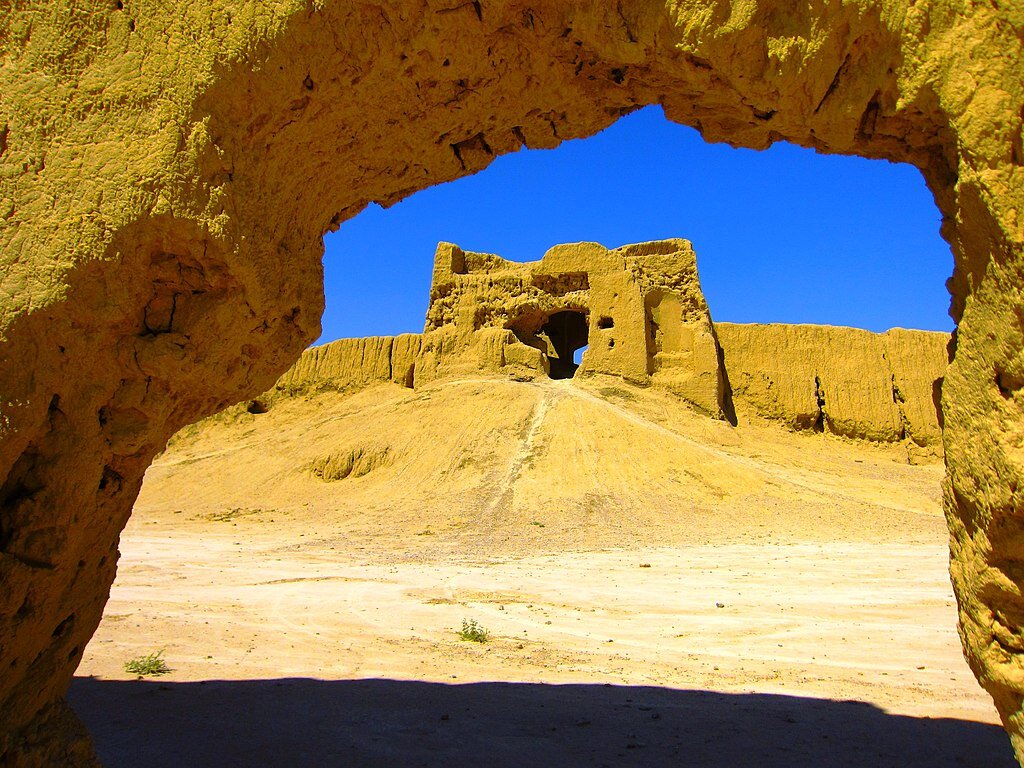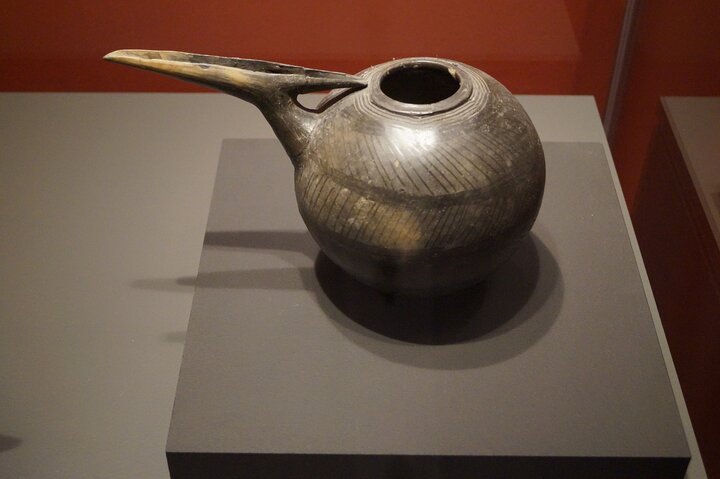Tepe Hissar: a cultural gem linking Mesopotamia to Central Asia

TEHRAN - Tepe Hissar is one of the first systematically excavated Bronze Age settlements in the northern Iranian plateau.
Situated in the village of Heydarabad just south of Damghan in Semnan province, Tepe Hissar is noteworthy for its continuous occupation from the fifth to the second millennium BC.
Experts believe that Tepe Hissar is prominently positioned as a cultural link between Mesopotamia and Central Asia due to the quantity and complexity of its excavated artifacts and funerary practices.
The human occupation at the site has been divided into three major periods (I, II, and III). So far, several seasons of excavation have been undertaken at the site, including the ones conducted by the University of Pennsylvania Museum of Archaeology and Anthropology.
Tepe Hissar has yielded a wide variety of evidence of the past. To the north lie valleys rich in lead, flint, wood, fruit, deer, stag, boar, fish, and fowl; to the south, the periphery of the great desert, with known occurrences of gold, copper, turquoise, semi-arid fauna, and herds of gazelles and onagers.
As mentioned by Iranica, the University of Pennsylvania Museum carried out excavations in the years 1931 and 1932. In 1972, a surface survey was conducted. The Iran Center for Archaeological Research, Turin University, and the University of Pennsylvania Museum collaborated on a re-study project in 1976. The Iran Cultural Heritage Organization then carried out salvage work in 1995.
A total of 1600 graves were noted; 782 of these from 1932 served as the foundation for the tabular presentation of burial data in 1937. There are only 33 graves for Hissar I, 24 for Hissar II, and 38 for Hissar III that are specifically described. In 1931, four Hissar IIIC-rich graves were discovered.
Since Wilhelm Krogman's 1940 study, some of the skeletal remains have undergone additional research using various methodologies. Typically, bodies were placed in plain pits with their sides flexed. But uncommon brick cist graves can be found in period II. Forest offers a thorough analysis of funeral traditions.
Erich Schmidt determined three major periods by analyzing burial ceramics. IA, IB, and IC were the three subperiods of Period I. The term IC/IIA better captures the ambiguity surrounding the distinction between IC and IIA. IIIA is ephemeral, while periods II and III are clearly defined.
Walls in pieces that still show signs of mud-brick construction make up the architectural ruins from Hissar I. There were no recovered complete building plans, but the rooms are rectilinear.
Period IIB walls have exterior buttresses that are evenly spaced apart. Structures that Schmidt dated to IIIB on the Main Mound can be proven to be from Hissar IIB, as suggested in Schmidt's field notes.
Due to the variety of its contents, the presence of burned bodies and the presence of flint arrowheads, the Burned Building of IIIB has undergone various interpretations. Its strategy was finished in 1976.

Ancient pottery from Tepe Hissar Layer III, 2300-1900 BC
It might be a shrine based on the presence of a small fire altar. The rows of rectangular rooms from the IIIC period that are located above the burned building may be significant because they are connected to ritual objects.
Agriculture served as the foundation of the subsistence economy. Plant remains from Hissar II onward, show an agricultural system based on cereals and the utilization of local fruit plant resources. Additionally, there were legumes and lentil seeds. Also indicating herding activities are the cattle and sheep figurines.
Pottery with painted designs was always mass-produced by full-time artisans. Geometric, botanical, and animal motifs, including gazelles, ibexes and birds, are used to decorate painted pottery from the Hissar I era.
The shapes of excavated objects consist of small cups and bowls and bowls on pedestal stems with flaring bases.
Daggers, knife blades, arrowheads, pins, tacks, points, and needles were all produced in Hissar I. In Hissar II and III, the quality and variety of copper artifacts increase. These include adornments for the wearer's persona, such as earrings, pendants, bracelets, and bands, as well as tools and weapons, such as lances, mattocks, chisels, and mace-heads, as well as luxury items, such as vessels, mirrors, boxes, and intricately cast pins and rods.
Laboratory studies demonstrate the remarkable persistence of technological conservatism from Hissar I through III. For the first time, copper was combined with lead, silver, and gold in Hissar IIB. In Hissar II, the 1976 excavations turned up nine empty pillow-shaped tablets and one clay tablet with signs. In the 1995 salvage excavation, more tablets bearing signs were discovered.
According to Britannica, the long habitation sequence at the site provided valuable evidence for the development of prehistoric pottery and metallurgy in that part of Iran.
AFM
Leave a Comment